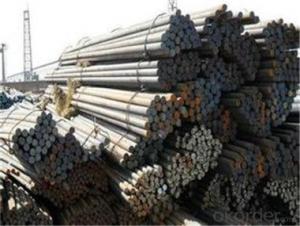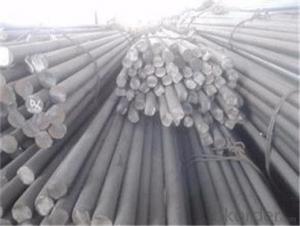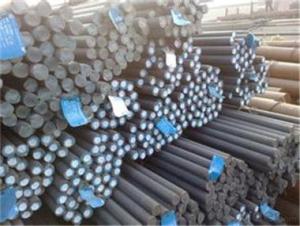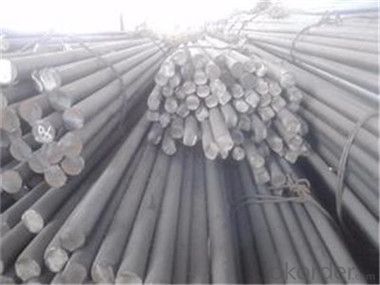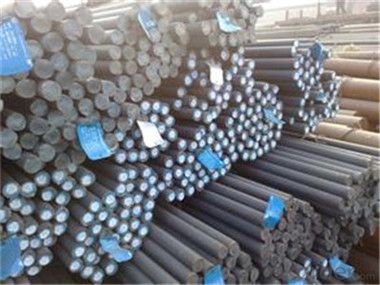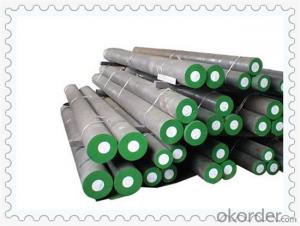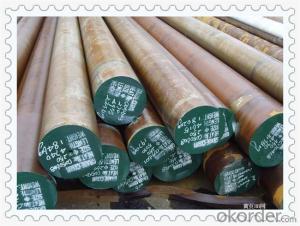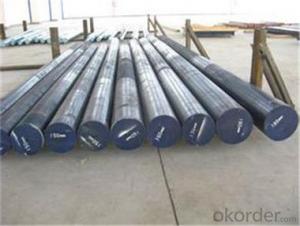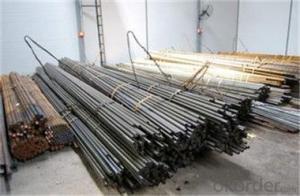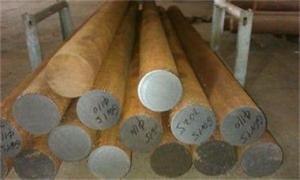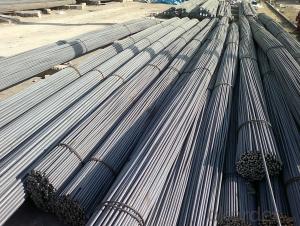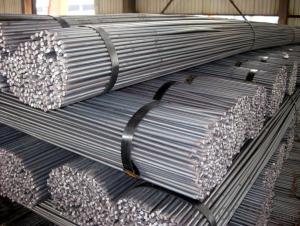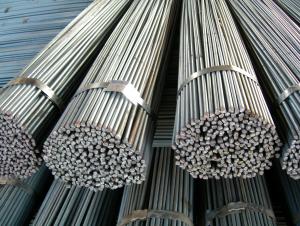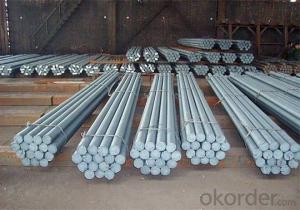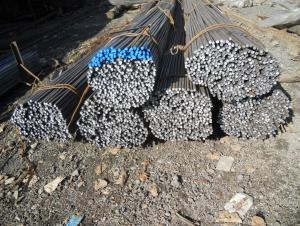Hard Chrome Carbon Steel Round Bar with Good Quality-CNBM
- Loading Port:
- Tianjin
- Payment Terms:
- TT OR LC
- Min Order Qty:
- 87 m.t.
- Supply Capability:
- 2000000 m.t./month
OKorder Service Pledge
OKorder Financial Service
You Might Also Like
Description of steel round bar:
1.Diameter 80 to 800 mm
2.Black or Bright surface
Festures of steel round bar:
4340 Forged Round Steel Bar
1.Dia 80-800mm Length:2000-13000mm or as required
2.Technique:Forged
3.Delivery Time:45 days
Specifications of steel round bar:
Description |
Carbon Steel Rod/Carbon Steel Bar,carbon steel rod,carbon steel shaft,mild steel bar, mild steel shaft,ms bar | |
Material | ASTM | 1005,1006,1008,1010,1015,1020,1025,1030,1035,1040,1045,1050,1055,1060,1065,1070,1080,1084, 1016,1022 |
DIN | Ck10,Ck15,Ck22,Ck25,Ck30,Ck35,Ck40,Ck45,Ck50, 30Mn4,40Mn4 | |
BS | 040A04,095M15,045M10,080A40,045M10,080M50 | |
Standard | GB/T799,ASTM A29,A108,A321,A575,BS970,DIN1652,JIS G4051 | |
Section shape |
Round | |
Length |
As your required | |
Application | Carbon steel rod applies to chemical industry, shipping industry, manufacturing industry,construction,decorate Industry,electric power, pump shafts, sanitary wares,furniture handles,boiler,high temperature resistant,low temperature resistant, corrosion resistant. | |
Images of steel round bar:
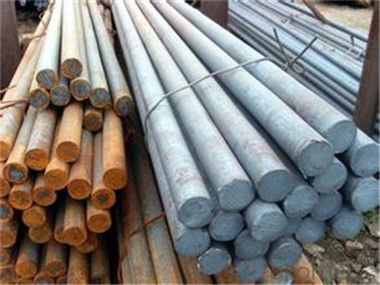
FAQ:
1. What is your package?
Packing situation: standard seaworthy packing or as customer required.
2. How long is the lead time?
Delivery time: 45 days after order confirmed.
3. What payment term do you accept?
Payment: T/T or L/C at sight.
- Q: What are the different types of steel round bar sizes?
- The different types of steel round bar sizes vary depending on the specific requirements and applications. Common sizes range from 1/4 inch to 24 inches in diameter. Additionally, steel round bars can be found in metric sizes, typically ranging from 6mm to 600mm in diameter. It is important to note that the availability of sizes may vary depending on the supplier and location.
- Q: What is the difference between hot rolled and cold drawn steel round bars?
- Hot rolled steel round bars undergo the process of heating a steel billet or ingot at a high temperature and subsequently rolling it into the desired shape. This process yields a rougher surface finish and a greater diameter tolerance in comparison to cold drawn steel round bars. The usage of hot rolled bars is frequently found in areas where strength and durability hold significance, such as in construction and manufacturing. On the contrary, cold drawn steel round bars are created by pulling a hot rolled bar through a die at room temperature, leading to a smoother surface finish and tighter diameter tolerances. This procedure also enhances the mechanical properties of the steel, including its strength and hardness. Cold drawn bars are often employed in scenarios where precision and a high-quality surface finish are prerequisites, like in the production of shafts, bolts, and precision components. To summarize, the principal disparities between hot rolled and cold drawn steel round bars encompass the surface finish, diameter tolerance, and mechanical properties. Hot rolled bars bear a rougher surface finish, larger diameter tolerances, and are typically utilized in contexts where strength and durability are paramount. Cold drawn bars possess a smoother surface finish, tighter diameter tolerances, and are commonly employed in situations necessitating precision and a high-quality surface finish.
- Q: Can steel round bars be used for making connecting rods?
- Certainly, connecting rods can be crafted using steel round bars. These rods play a crucial role in internal combustion engines, necessitating robustness and endurance to endure the engine's operational forces and stresses. Steel round bars, often composed of alloy steel, exhibit exceptional mechanical traits, including elevated tensile strength, hardness, and resistance to fatigue. Consequently, they prove suitable for this purpose. Additionally, steel round bars can be conveniently machined and molded into the necessary dimensions and specifications demanded by connecting rods. As a result, employing steel round bars emerges as a widespread and dependable option for fabricating connecting rods in industries such as automotive and others.
- Q: What are the advantages of using magnesium-alloy steel round bars?
- One advantage of using magnesium-alloy steel round bars is their high strength-to-weight ratio. These bars offer excellent strength and durability while being lightweight, making them suitable for applications where weight reduction is crucial, such as in aerospace and automotive industries. Furthermore, magnesium-alloy steel round bars exhibit good corrosion resistance, which extends their lifespan and makes them ideal for outdoor and marine applications. Additionally, these bars can be easily machined and formed, allowing for flexibility in design and fabrication processes.
- Q: Can steel round bars be used for making universal joints?
- Yes, steel round bars can be used for making universal joints. Steel round bars are commonly used in the manufacturing of universal joints due to their strength, durability, and ability to handle high torque and rotational forces.
- Q: How do steel round bars compare to plastic or composite bars?
- Plastic or composite bars cannot match the advantages of steel round bars. Firstly, steel round bars surpass plastic or composite bars in terms of strength and sturdiness. They excel in enduring heavy loads and providing outstanding structural support. Therefore, they are ideal for construction or engineering projects demanding robustness and durability. Secondly, steel round bars exhibit remarkable resistance to impact and wear. They can withstand severe environmental conditions and are less prone to cracking, chipping, or breaking compared to plastic or composite bars. Consequently, steel round bars suit heavy-duty applications where abrasion resistance is crucial. Moreover, steel round bars boast superior heat resistance in comparison to plastic or composite bars. They can endure high temperatures without distorting or compromising their structural integrity. Hence, steel round bars are suitable for applications involving extreme heat, such as machinery or equipment manufacturing. Furthermore, steel round bars are highly versatile and can be easily machined or modified to meet specific requirements. They allow for effortless customization and adaptability through cutting, drilling, bending, or welding. Conversely, plastic or composite bars may have limitations regarding customization or modification. Nonetheless, it is important to consider that steel round bars also have drawbacks when compared to plastic or composite bars. Steel is heavier, which can pose challenges in handling and transportation. Additionally, depending on the specific grade and quality, steel round bars can be more expensive than their plastic or composite counterparts. In conclusion, steel round bars surpass plastic or composite bars in terms of strength, durability, impact resistance, and heat resistance. Although they may have some drawbacks such as weight and cost, their overall performance and versatility make them the preferred choice for numerous high-performance applications.
- Q: Can steel round bars be used in the manufacturing of lighting fixtures?
- Yes, steel round bars can be used in the manufacturing of lighting fixtures. Steel is a versatile material that offers strength, durability, and a sleek appearance, making it suitable for various applications, including lighting fixtures. Steel round bars can be shaped, cut, and welded to create different components of lighting fixtures, such as frames, bases, or decorative elements. Additionally, steel can be finished with various coatings or finishes to enhance its aesthetic appeal and protect it from corrosion.
- Q: What are the different types of steel round bar alloys used in the construction industry?
- There are several types of steel round bar alloys commonly used in the construction industry. Some of the most popular ones include carbon steel, stainless steel, and alloy steel. Carbon steel is a widely used option due to its high strength and affordability. Stainless steel is preferred for its corrosion resistance properties, making it suitable for environments with high moisture or chemical exposure. Alloy steel, on the other hand, is known for its enhanced mechanical properties and durability, making it ideal for heavy-duty applications in construction.
- Q: What are the different grades of steel round bars?
- Steel round bars come in various grades, each with its own distinct properties and characteristics. Some of the most commonly used grades are as follows: 1. Mild Steel, also known as low carbon steel, is widely preferred due to its affordability and versatility. It has a relatively low carbon content and is easily weldable and malleable. 2. Carbon Steel has a higher carbon content compared to mild steel, resulting in increased strength and durability. It is commonly used in applications that demand high strength and hardness, such as construction and machinery. 3. Alloy Steel round bars are created by combining carbon steel with different elements like chromium, nickel, or molybdenum. This combination enhances the material's properties, such as improved corrosion resistance, toughness, and tensile strength. 4. Stainless Steel round bars are predominantly made of iron and contain at least 10.5% chromium. This grade of steel is renowned for its exceptional corrosion resistance and is commonly used in industries, such as food and pharmaceuticals, where cleanliness and hygiene are critical. 5. Tool Steel round bars are specifically designed to withstand high temperatures, heavy loads, and repetitive impacts. They possess excellent hardness, wear resistance, and toughness, making them ideal for manufacturing tools and dies. 6. High-Speed Steel (HSS) round bars, a type of tool steel, can maintain their hardness even at high cutting speeds. They find extensive use in cutting, drilling, and machining applications that require high speeds, such as the production of drills and milling cutters. These are just a few examples of the wide variety of steel round bar grades available. Each grade is tailored to meet specific requirements in different industries and applications. It is crucial to select the appropriate grade based on factors like strength, corrosion resistance, and desired properties for a particular project or usage.
- Q: What are the different standards for steel round bars?
- There are several different standards for steel round bars, including ASTM A36, ASTM A105, ASTM A276, ASTM A479, and ASTM A572. These standards outline the specific requirements for the chemical composition, mechanical properties, and dimensions of steel round bars for various applications.
Send your message to us
Hard Chrome Carbon Steel Round Bar with Good Quality-CNBM
- Loading Port:
- Tianjin
- Payment Terms:
- TT OR LC
- Min Order Qty:
- 87 m.t.
- Supply Capability:
- 2000000 m.t./month
OKorder Service Pledge
OKorder Financial Service
Similar products
Hot products
Hot Searches
Related keywords
